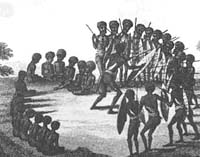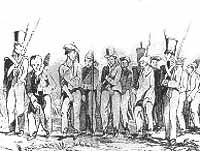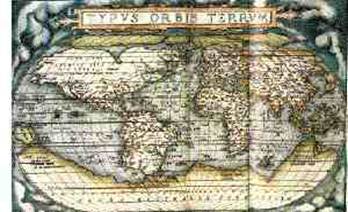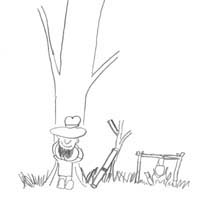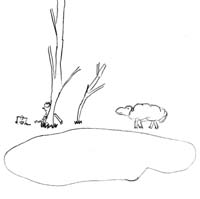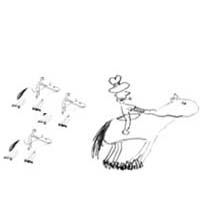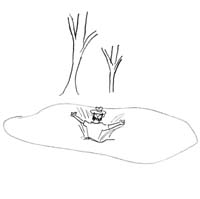Топик: Australia
is located in the Southern Hemisphere
(that is the bottom half of the world).
This is why it is sometimes called the Land Down Under.
Australia is the smallest, flattest, and driest inhabited continent in the world. It is the only country which is also a whole continent. 18.6 million people live here.
The people of Australia are called Australians. Australians call different parts of their country by different names:
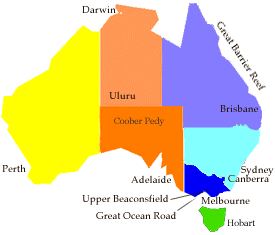 ·
The City
·
The City
Is any large city and its suburbs. Over 85% of the
people live in cities. Melbourne, Sydney, Brisbane, Perth and Canberra are
major cities.
· The Country
Is the area immediately outside the city and usually includes the surrounding
smaller towns and farms. Most of what is called "the country" is a
stretch of land about 200 kilometres deep around the eastern and southern
seaboards of Australia. Upper Beaconsfield, the Great Ocean Road , the Dandenongs,
etc are in "the country".
· The Outback
Is the sparsely populated arid interior of Australia. The Australian Outback is
both harsh and breathtakingly beautiful. It's like no other place on earth. Coober
Pedy, Uluru, etc are in the Outback.
There are 6 states and 2 territories in Australia:
- Queensland
- New South Wales
- South Australia
- Tasmania
- Victoria
- Western Australia
- Northern Territory
- Australian Capital Territory
The capital of Australia is Canberra .
Australia has lots of unusual Animals.
Australia has the largest coral reef in the world called the Great Barrier Reef. It is stunning!.
Australians speak English. But we also have our own special words and phrases referred to as Strine.
Australia's favourite song is Waltzing Matilda
Aborigines - The First Australians
The word Aborigine is derived from Latin and means "from the
beginning". This is the name given to the native Australians by the
Europeans.
This is not the name they called themselves.
They prefer to call themselves: Koori.
BEFORE 1770
The first human inhabitants of Australia were the Aborigines.
They are a dark-skinned people belonging to the Australoid group who probably came from Asia. Nobody is quite sure how they came to Australia around 60,000 years ago. They may have walked and sailed here from Asia.
The Aborigines were nomadic hunter-gathers. They roamed from place to place. They hunted animals using spears and boomerangs. They also gathered fruits, nuts and yams which they ate.
There were around 300,000 aborigines in about 250 tribal groups before the first white settlers came. Each group had its own territory, traditions, beliefs and language.
They all believed in the Dreamtime which is the center piece of aboriginal culture.
THE FIRST ENCOUNTER WITH SETTLERS
The aborigine people had never seen white people until Captain James Cook landed in Botany Bay in 1770. They were shocked to see these white people in their strange clothes.
When the aborigines first saw the ships of the "First Fleet" enter Botany Bay in 1778 with so many white skinned people they thought they were the spirits of their dead ancestors (after all they were so white). In actual fact these were the first European settlers led by Captain Arthur Phillip.
At first the Aborigines were friendly towards the visitors but were very confused at the way white foreigners behaved:
- Why did the foreigners walk on aborigine sacred sites and dig up aborigine graves?
- Why did they boss each other around and beat and hang people?
- Why did they chop down trees and take food without asking?
- Why were they mean and selfish towards each other and not sharing?
THE FIRST MISUNDERSTANDING
While exploring around the new settlement Captain Arthur Phillip befriended an old aborigine man. When he returned to camp he met the old man again and gave him some beads and a hatchet. Later that night Captain Phillip discovered the old man taking one of his shovels and slapped the man on his shoulder and pushed him away while pointing to the spade. The old man was very upset and could not understand why his friend was acting this way.
Aborigines share what they have with their friends.
Captain Phillip was very careful not to offend the aborigines but Aborigine and the Settlers cultures were so different! They didn't understand each other.
CONFLICT
When the aborigines realised that the white men were not the spirits of their dead ancestors and that the settlers were taking more and more of their land and destroying the trees and wild life they began to fight back.
The aborigines killed a number of the settlers and even wounded Captain Phillip in an attack. The settlers reacted by slaughtering and poisoning the aborigines and systematically destroying the land and wild animals they lived on.
DISEASE
White settlers brought diseases the aborigines had never had before (diseases which were quite common in Europe at the time).
Aborigines caught smallpox and even the common cold and died in great numbers. Within two years smallpox had killed almost half the aborigine population around Sydney.
DEPRAVATION
The British colonists declared that before their arrival all of the continent was terra nullius (uninhabited by humans). They used this as justification for taking whatever they wanted.
As more and more white settlers moved in and occupied the fertile lands the aborigines were pushed further and further away from their traditional lands and into the harsh arid interior. Their families were broken up, their children taken away from them and sent to be "civilised", their sacred sites destroyed and their wild animals hunted.
The killing and exploitation of aborigines by whites continued well into the twentieth century. The aboriginal population declined from the original 300,000 when the first white settlers arrived to only about 60,000 people (less than the number of people that can be seated at the MCG stadium!).
Aborigines were second class citizens in their own land. They only got the right to vote in 1967.
This is a shameful part of Australian history.
RECONCILIATION
Much progress has been made over recent years to try to right the wrongs of the past. Where possible the government has been returning land to their traditional owners and encouraging Aborigines to rebuild their culture and lives.
They are the single most disadvantaged group of people in Australia.
There is still a long way to go!
ANIMALS - AUSTRALIA
Up to about 250 millions of years ago the world had just one huge super-continent call Pangaea. Animals and plants were able to move and intermix with one another.
About 200 million years ago this super-continent broke up into two continents (Laurasia and Gondwana).
About 60 million years ago Gondwana broke up into what was to later become South America, Africa, Antarctica, India and Australia.
Since then Australia has been isolated from the rest of the world by vast oceans. The animals and plants which were originally here no longer had contact with animals from other parts of the world. They evolved separately. That is why they are so different.
NATIVE AUSTRALIAN ANIMALS
Australia has lots very unusual animals. About 95 percent of the mammals, 70 percent of the birds, 88 percent of the reptiles and 94 percent of the frogs are found nowhere else in the world.
Find out about them here:
- Antechinus
- Long-Nosed Bandicoot
- Bat
- Black Snake (Red-bellied)
- Cassowary
- Cockatoo
- Crocodile (Saltwater)
- Echidna
- Emu
- Frilled Lizard
- Kangaroo
- Koala
- Kookaburra
- Penguin (Fairy)
- Platypus
- Possums:
- Bushtail
- Feathertail Glider
- Leadbeater's
- Pygmy
- Ringtail
- Sugar Glider
- Tawny Frogmouth
- Wallaby
- Wombat
WHO DISCOVERED AUSTRALIA
In about 200AD a famous Greek astronomer named Claudius Ptolemy believed that the earth had to be balanced or it would topple over. So he figured that there had be a land yet unknown to Europeans somewhere below the Indian Ocean. Over time this yet to be discovered land came to be known as
|
Terra
Australis Incognito |
|
For many centuries people in Europe were certain that there was a land down under (this map from 1570 shows what they thought) but nobody knew how to get to it . They kept missing it or not realising that they had stumbled upon it. For over 200 years hundreds of European navigators set across the seas searching for the Unknown
Southern Land.
They expected to find gold and other treasures.
Aborigines were the first people to discover Australia. They may have walked or sailed here from Asia over 60,000 years age. They arrived at a time when the northern parts of Australia had a hot humid tropical climate much like that of Asia today.
Portuguese sailors may have sailed along the coastline of Australia as far back as 1542. Some maps have been found which show parts of what appears to be the Australian coastline. But there is no definite proof that they did.
In 1616 a Dutch trading ship, the Eendracht, on its way to the Indies (now called Indonesia) bumped into west coast of of Australia. Captain Dirk Hartog landed at Shark Bay, looked around a bit but didn't find anything interesting. He nailed a pewter dish to a tree to record his visit. He did not realize that he had found Australia. His is the first recorded European landing in Australia.
Dutch sailors continued see the coastline on their trips and called this land New Holland but didn't bother to visit it
In 1642 a Dutchman named Abel Tasman sighted an island he called Van Diemen's Land. He did not realise that this island was a part of Australia. He also went on to explore New Zealand.
This island was later renamed Tasmania in honour of Abel Tasman
In 1770 an expedition from England lead by Captain James Cook sailed to the south pacific. They were supposed to make astronomical observations. But Captain Cook also had secret orders from the British Admiralty to find the southern continent.
They sailed in the Endeavour. It had a crew of 94 men.
They landed in a bay on the east coast on the 29th of April 1770. Cook first called this place Stingray Bay, then he changed it to Botanist Bay and finally called it Botany Bay because of all the strange and unusual plants there.
He called this new land New Wales and then changed it to New South Wales. He claimed the land for England (even though the land already belonged to the Aborigines).
Captain Cook was also the first European to visit the Great Barrier Reef.
Actually he ran into it and damaged his ship pretty badly. He had to spend seven weeks repairing his ship.
Canberra
Canberra is a city of about 310,000 people located in the Australian Capital Territory (ACT) approximately 200 kilometres from Sydney. Most of the people in Canberra are employed by the federal government.
Canberra is a very young city. The plans for the city were only drawn up in 1911 and construction didn't commence until 1913.
The grand design for the city was drawn up by a relatively obscure american architect named Walter Burley Griffin. The lake which is a central focus of the city today is named after him.
With its imposing buildings, broad boulevards and uncluttered streetscape (there are no billboards, in Canberra) it lacks the charm and vibrancy of more cosmopolitan cities such as Sydney and Melbourne.
FEDERAL PARLIAMENT HOUSE
The Federal Parliament House is built on top of Capital Hill. It was completed in 1988 and replaces the old parliament house which is located further down the hill. The building was designed to merge into the profile of the hill itself.A stainless steel flag mast 81 metres tall surmounts the building from which flutters the Australian flag (the flag is as big as a double decker bus).
It cost over 800 million dollars to build and is considered to be one of the most attractive parliament buildings anywhere in the world.
The Members Hall is at the very centre of the Parliament complex between the House of Representatives and Senate chambers. It has a large skylight canopy through which can be seen the stainless steel flag mast and the Australian flag.
The House of Representatives Chamber can seat up to 240 Members of Parliament.
Currently there are approximately 148 members. They are popularly elected for three year terms. The numbers of members representing each state is proportional to their populations but there must be must be at least five members from each state.
The Senate Chamber can seat 120 Senators.
Currently there are 76 senators. They are popularly elected for 6 year terms. There are 12 senators from each state and two each from each territory.
HISTORY OF CANBERRA
Aborigines lived around what is now Canberra for thousands of years.
1820 The first Europeans to visit the Limestones plains where current day Canberra is located were Joseph Wild, James Vaughan and Charles Throsby.
1824 Joshua John Moore took up the first land grant on the Limestone Plains. He called his property "Canberry" after the name the local aborigines called the place. His property was where the the Australian National University and Lake Burley Griffin is today.
1825 Robert Campbell started a grazing station on the Limestone Plains. He named his property "Duntroon" after the family castle in Scotland. He built a house called Duntroon House which was added on to by his son and descendants. It is part of the Royal Military College today.
Many other people also farmed and grazed the land around the Limestone Plains.
1901 On January 1 Queen Victoria signed the Constitution Act making Australia an independent country. Both Sydney and Melbourne wanted the national capital to be in their cities. So to prevent too much rivalry a search was begun to find a new site for the federal capital.
1908 The Canberra area was selected as the future site for the capital of Australia.
1911 An international competition was launched to find the best plan for the new city. The design by an American landscape architect named Walter Burley Griffin won the competition.
1927 The temporary federal parliament building was completed and federal parliament moved from Melbourne to its new home in Canberra.
1978 It was decided that a new parliament building was needed to replace the temporary building which had been used for over fifty years.
1988 The new Parliament House was opened by Queen Elizabeth 2.
Coober Pedy
The name Coober Pedy is derived from the Aboriginal words "kupa
piti", which means "white man's burrow".
The description is apt because most people live and work underground.
Coober Pedy is located 836 kilometres (510 miles) north of Adelaide and about 300 kilometres south of Uluru.
It is a desolate landscape devoid of vegetation and water. It is an extremely hot place too. The entire landscape is pockmarked by the telltale tailing of countless opal mines.
In 1915 a young boy named Willie Hutchison, who was out with his father prospecting for gold, discovered the first opal there. Since then the town has grown to about 2500 people.
Coober Pedy produces about 90% of the world's opals.
Because of the extreme heat during the summer almost all buildings are located underground.
Great Barrier Reef
The Great Barrier Reef stretches along the east coast of Queensland in Australia. It is the world's largest coral reef . It is over 2000km (1250 miles) long! It is not a single reef at all. It is made up of over 2900 individual reefs very close to each other
WHAT IS A CORAL REEF?
A coral
is a tiny marine polyp. It is the living part of the coral reef. There
are many different kinds of corals. 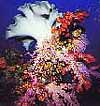 These
are what gives the coral reef its colourful appearance. Corals feed mostly on
plankton. Coral grows in warm climates where there is clear salt water and
sunlight. They don't like pollution.
These
are what gives the coral reef its colourful appearance. Corals feed mostly on
plankton. Coral grows in warm climates where there is clear salt water and
sunlight. They don't like pollution.
A coral reef is a natural barrier made of the bodies of living and dead coral. It is normally just below the surface of the water.
It is made of two parts the:
 white
part is made from the bodies of zillions and zillions of polyps which have
died over hundreds and thousands of years.
white
part is made from the bodies of zillions and zillions of polyps which have
died over hundreds and thousands of years. - colourful part is the living part of the coral reef. It is made up of living polyps.
WHO LIVES HERE?
· 1500 species of fish
· 400 different types of coral
· 4,00 molluscs (like clams and the sea slug)
· 500 species of seaweed
· 215 species of birds
· 16 species of sea snake
· 6 species of sea turtle
· Whales visit during winter
New South Wales
New South Wales is the fourth largest state in Australia. It is 801,600 sq km in size.
About 6 million people live in New South Wales. One in three Australians lives in New South Wales.
SYDNEY
Sydney is the capital of the state of New South Wales. It is Australia's oldest and largest city. The defining symbols of Sydney are its Opera House and "coat hanger bridge".
Sydney is the commercial capital of Australia.
About 3.8 million people live in the greater Sydney area.
THE BEACH
Bondi and Manly are some of the famous beaches along the New South Wales coast a short distance from Sydney
THE BLUE MOUNTAINS
The Blue Mountains rise from the coastal plains about 65 kilometres west of Sydney. They are composed of sandstone deposited over 170 million years ago that was then pushed up to form a plateau which was subsequently eroded by wind, rain and water leaving spectacular gorges, pinnacles and cliffs. The highest point is about 1100 meters above sea level.
The towering cliffs of these mountains presented a seemly impassable barrier to early european settlers. Even today most parts are only accessible to experienced bushwalkers.
WHY ARE THEY SO BLUE?
The Blue Mountains are covered with eucalyptus trees which constantly release very fine droplets of oil into the atmosphere. These droplets cause the blue light-rays from the sun to be scattered more effectively (knows as Rayliegh Scattering) making the whole area look bluer.
Strine - Australian Slang
Australian Strine consists of words and phrases which:
· have different meanings from other English (like American English or British English),
· we have made up ourselves or
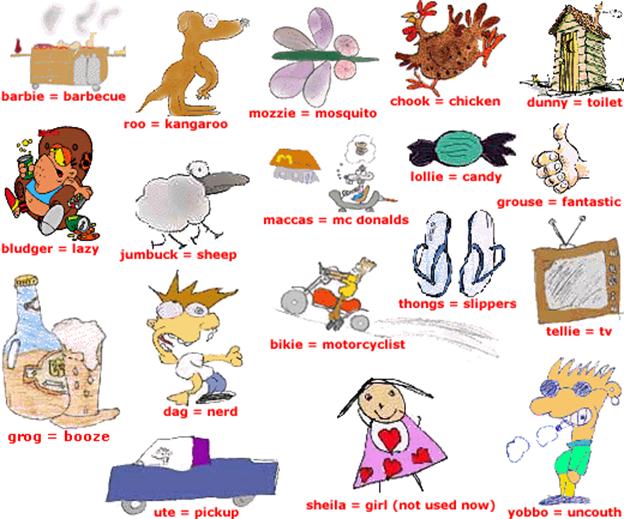 · we have borrowed from
Aborigine words or from slang used by early settlers.
· we have borrowed from
Aborigine words or from slang used by early settlers.
The Dandenongs
The Dandenong Ranges are located approximately 40 kilometers from Melbourne, Victoria, Australia.
HEALESVILLE SANCTUARY
The Healesville Sanctuary is a place where you can see Australian native animals in natural bushland surroundings. The sanctuary also carries out research and breeding programs for many endangered animals.
There is a real cool Koala enclosure, platypus tank and snake pit too.
Here is the
official web site for the Healesville Sanctuary
The Exhibits page is very good.
PUFFING BILLY RAILWAY
It is great fun riding the Puffing Billy Railway as it weaves its way up the mountains. We even get to sit on the windowsills and dangle our legs out the windows. If you look closely you can see some people doing just that. Because its a stream train you get coal dust in your eyes and on your clothes.
When the weather is really dry and there is a danger of bushfires the Puffing Billy 's steam engine isn't used. That's because a spark from its steam engine could start a bushfire. They use a diesel engine instead.
Here is the official web site for the Puffing Billy Railway .
TULIP FESTIVAL
Every year thousands of visitors come to see the tulips at the Tesselaar Tulip farm in Silvan.
There are many other gardens in the Dandenongs too.
UPPER BEACONSFIELD
Upper Beaconsfield is located 53 kms (33 miles) south-east of Melbourne in the Dandenong Ranges on the southern foothills of the Great Dividing Range.
Upper Beaconsfield retains much of its rural heritage and atmosphere with tree lined streets, varied eucalyptus forests, wet-lands, fern gullies and secluded creeks.
THE GREAT OCEAN ROAD
The Great Ocean Road starts at Torquay (about 100kms from Melbourne) and winds its way for 180 kms along the south-western coast of Victoria , Australia.
It is one of the most spectacular coastal drives in the world. It winds its ways around ragged cliffs, windswept beaches, and tall buffs and passes through lush mountain rainforest and towering eucalyptus.
The Great Ocean Road was started in 1918 and completed during the Great Depression as a public works project to give returned soldiers and unemployed people work.
Some of the sights along the way are:
- Bells Beach - a great place to go surfing and where the Bells Surfing Classic is held each Easter.
- Shipwreck Coast - where the wrecks of over 80 ships lie on the ocean floor. Many ships carrying immigrants to the gold fields of Victoria floundered in the treacherous seas.
- Lorne - a popular sea side resort in Apollo Bay.
- Port Campbell National Park - One of the most photographed sections of the road where shear golden limestone cliffs and rock formations withstand the buffeting of fierce seas.
- Twelve Apostles -
(there are only 10 left!) - London Bridge
(This is what it looked like before one of its spans collapsed) - Loch Ard Gorge - where in 1878 the clipper Loch Ard was driven into rocks during a storm with the loss of 52 lives.
- Otway National Park
- Port Fairy - a well preserved fishing village which was settled by sealers and whalers back in the 1820s.
THE LOCH ARD DISASTER
The 18 passengers and 36 crew on the iron-hulled clipper Loch Ard had a party on the night of March 31, 1878, to celebrate their arrival in Melbourne the next day after a three month voyage from England. But Captain Gibb stayed on deck all night, worried by the thick mist that obscured the horizon and Cape Otway light. At 4am the mist lifted and the lookout cried: "Breakers ahead." Despite desperate attempts to turn the ship away -- and then to hold it with its anchors -- it struck rocks. water flooded in, the masts flailed against the high cliff face before crashing down and waves swept across the decks, hampering attempts to get the lifeboats into the water. Only two survived -- ship's apprentice Tom Pearce and Eva Carmichael, both aged 18. Eva's parents and five siblings were lost. Tom drifted into the gorge where he saw passenger Eva clinging to a mast -- he swam out, pulled her into a cave and found some brandy in the wreckage to revive her. He climbed out of the gorge and came upon two stockmen, and a rescue party was organised. But only four bodies -- including Eva's mother and sister, were able to be recovered from the treacherous seas and most of the ship's valuable cargo was lost or looted. Tom Pearce became a national hero for his rescue of Eva, who soon returned to Ireland.
A few days after the disaster a packing case washed up in the gorge. It contained a life-sized Minton pottery peacock destined for the Melbourne Great Exhibition of 1880
The Outback is the arid sparsely populated interior of Australia.
It makes up almost 85% of Australian landmass. Very few humans live out there.
It is also sometimes called "Beyond the Black Stump".
The Australian Outback is both harsh and breathtakingly beautiful. It's like nothing else anywhere else in the world.
A ROAD TO NEVER-NEVER
In the outback you can travel for days without meeting anyone. This is why it is sometimes called the Never-Never: the never ending landscape; the never ending horizon.
The land is unforgiving to the careless and foolhardy. You can die of dehydration within hours if you are not careful.
A STATION
Yes people actually do live in the outback.
Cattle and sheep are grazed on huge tracts of land called Stations (what might be called a ranch in the USA). There are Stations in the outback that occupy more land than some countries. Helicopters and small planes are usually used to round up stock (the sheep and cattle) and to check fences (dingo and rabbit fences).
A person who
rounds up stock is called a Stockman.
A person who works at a Station is called a Stationhand.
The owner is called a Station-Manager
THE PEOPLE
The vast distances have forced people to adapt to their isolation (some people being more than a day's drive from their nearest neighbor). A two-way radio and an airstrip are vital to any outback station.
Because of the great distances some children in the outback cannot attend regular school. They learn from the School of the Air which is a special school where the teacher and student interact via a two-way radio.
Here is a fascinating school in the outback run by the Mupuru aboriginal community . Its really worth a visit: The Mapuru Homeland Leaning Centre
The Royal Flying Doctor Service operates a fleet of airplanes outfitted as flying ambulances and clinics. They visit these remote locations to provide medical services. They also provides advice over the two-way radio.
ULURU
Uluru: Is a huge rock (called a monolith) that sticks out in the middle of the flat desert. From a distance it looks like an impregnable fortress built eons ago by some mythical warlord.
Uluru is over nine kilometres (6 miles) around and over 348 metres (1000ft) high. It is believed to be about 600 million years old and was once part of a huge mountain range. The mountain range has long since disappeared - eroded away by rain and wind.
With each passing hour as the sun moves across the sky the rock changes colour - changing from delicate mauve, blues, pinks, browns to fiery red.
It is a sacred place to the Pitjanjara Aboriginal tribe.
DEVILS MARBLES
Devils Marbles: These massive boulders are scattered along the Stuart Highway near Alice Springs. They glow red in the sunset. Aborigines believe they were left by the Rainbow Serpent of the Dreamtime.
WAVE ROCK
Wave Rock: Is a huge granite rock that looks like a huge wave that has been frozen in time and turned into stone. It has been made this way by the wind and rain water running down its sides.
KATHERINE GORGE
Katherine Gorge: Is one of 13 gorges in Nitmiluk National Park. They began forming about 23 million years ago as torrents of water flowing through tiny cracks in the earth slowly eroded away the earth and rock creating these huge gorges.
It is rich in Aboriginal art, with rock paintings representing the spiritual 'dreaming' of the Jawoyn people, the traditional owners of the land.
Apart from boat rides through the Gorge, with its sheer towering walls, there are also over 100 kilometres of walking tracks and numerous aboriginal rock paintings to visit
THE OLGAS
The Olgas: Are enormous domes of red rock located about 32 kms from Uluru. You can walk into valleys and gorges between the 36 rock domes and feel the eerie mystery around you. The Aborigines call it 'Kata Tjuta'. It has great spiritual significance to them.
 The Peoples of Australia
The Peoples of Australia
We came from all over the world.
Australians are a very friendly open sort of people. We love our sports, our family barbecues and the beach. We are very urbanised - most of us living in the larger cities along the coast. Almost 94% of the population are of European decent and as a result we have a western outlook and culture. In general Australians are very tolerant of other people and their customs.
WORK
Australians are one of the most urbanised societies in the world. Almost 80% of the workforce are employed in service industries such as: offices, banks, etc in the major cities.
About 16% work in manufacturing
About 3% are farmers or graziers.
Wool is one of Australia's major exports. Wool shearing is hard work.
Australia is rich in mineral deposits. We mine and export alumina, iron, coal, copper,gold, uranium, etc all over the world.
About 1% work in the mining industry
SPORTS
During winter we play Australian Rules Football which is played with an oval ball on an oval field with eighteen players on each team. We also play Rugby.
In the summer we play cricket. Cricket is played with a flat bat and a round leather covered ball. Each team has 11 players. The objective of the game is to hit the ball as far as possible without getting "caught out" or without having the ball come in contact with your body or hitting the stumps (3 short poles behind the batsman). The next Olympic games will be held in Sydney Australia in the year 2000.
LEISURE
Almost 85% of Australians live within a few hours drive of the coast
Most major cities have bicycle tracks.
We love to race almost anything: horses, camels, goats, cockroaches and even earth worms.
Australia has lots of wide open spaces and parks.
Upper Beaconsfield
Upper Beaconsfield is located 53 kms (33 miles) south-east of Melbourne in the Dandenong Ranges on the southern foothills of the Great Dividing Range. Upper Beaconsfield retains much of its rural heritage and atmosphere with tree lined streets, varied eucalyptus forests, wet-lands, fern gullies and secluded creeks. The large residential blocks blend well with the surrounding environment. There are strict laws protecting the local flora and fauna
STONEY CREEK
We go to Stony Creek on hikes, to catch yabbies and fish. It's lots of fun. It isn't usually misty like in this picture.
There are lots of native ferns and gum trees around the creek.
There are Platypuses in the creek but they are very shy and hide when us kids come by.
ASH WEDNESDAY BUSHFIRE
There was a terrible bushfire in Upper Beaconsfield in 1983.
We didn't live here then. The fire burned right through the land on which our house is now. We can still see the burn marks on some of the trees in our garden. Lots of houses burnt down and lots of animals and some people died too. We are all more careful now.
ELEPHANT ROCK
Elephant Rock is located on the Beaconsfield-Emerald Road . Kids paint it in all sorts of colours. There is a good lookout from where you can see Cardinia Dam. There are also good walking tracks there.
Waltzing Matilda
Waltzing Matilda is an Australian icon.
It is quite likely that more Australians know the words to this song than the
national anthem.
There is probably no other song that is more easily recognised by a populace:
young or old: ocker or a newly arrived immigrant.
|
Once a jolly swagman camped by a billabong, Under the shade of a coolibah tree, And he sang as he watched and waited 'til his billy boiled "Who'll come a-waltzing, Matilda, with me?" Waltzing Matilda, Waltzing Matilda Who'll come a-waltzing, Matilda, with me And he sang as he watched and waited 'til his billy boiled, "Who'll come a-waltzing, Matilda, with me?" |
|
Swagman - a drifter, a hobo, an itinerant shearer who carried all his belongings wrapped up in a blanket or cloth called a swag. Billabong - a waterhole near a river Coolibah - a eucalyptus tree Billy- a tin can with a wire handle used to boil water in |
|
Along came a jumbuck to drink at the billabong, Up jumped the swagman and grabbed him with glee, And he sang as he stowed that jumbuck in his tucker bag, "You'll come a-waltzing, Matilda, with me". Waltzing Matilda, Waltzing Matilda Who'll come a-waltzing, Matilda, with me And he sang as he watched and waited 'til his billy boiled, "Who'll come a-waltzing, Matilda, with me?". |
|
Jumbuck - a sheep Tucker Bag - a bag for keeping food in |
|
Up rode the squatter, mounted on his thoroughbred, Down came the troopers, one, two, three, "Whose is that jumbuck you've got in your tucker bag?" "You'll come a-waltzing, Matilda, with me". Waltzing Matilda, Waltzing Matilda Who'll come a-waltzing, Matilda, with me And he sang as he watched and waited 'til his billy boiled, "Who'll come a-waltzing, Matilda, with me?". |
|
Squatter - a wealthy landowner. Trooper - a policeman, a mounted militia-man. |
|
Up jumped the swagman, leapt into the billabong, "You'll never catch me alive," said he, And his ghost may be heard as you pass by the billabong, "Who'll come a-waltzing, Matilda, with me". Waltzing Matilda, Waltzing Matilda Who'll come a-waltzing, Matilda, with me And he sang as he watched and waited 'til his billy boiled, "Who'll come a-waltzing, Matilda, with me?" |
|
What does Waltzing Matilda mean?
The phrase Waltzing Matilda is believed to have originated with German immigrants who settled in Australia.
Waltzing is derived from the German term auf der walz which meant to travel while learning a trade. Young apprentices in those days travelled the country working under a master craftsman earning their living as they went - sleeping where they could.
Matilda has Teutonic origins and means Mighty Battle Maiden. It is believed to have been given to female camp followers who accompanied soldiers during the Thirty Year wars in Europe. This came to mean "to be kept warm at night" and later to mean the great army coats or blankets that soldiers wrapped themselves with. These were rolled into a swag tossed over their shoulder while marching.
So the phrase Waltzing Matilda came to mean: to travel from place to place in search of work with all one's belongings on one's back wrapped in a blanket or cloth. This is what Swagmen did in outback Australia.
How Did the Song Originate?
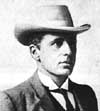 Andrew
Barton (Banjo) Patterson [1864-1941] was a solicitor (lawyer) by profession and
lived and worked in Sydney, Australia.
Andrew
Barton (Banjo) Patterson [1864-1941] was a solicitor (lawyer) by profession and
lived and worked in Sydney, Australia.
In 1895 Banjo and his fiancee, Sarah Riley, visited the Dagworth Homestead a station in outback Queensland. This station was owned by the family of one of Sarah's school friends: Christina Macpherson. While at the station Banjo heard Christina play a tune called the "Craigeelee" on an autoharp. Banjo liked the "whimsicality and dreaminess" of the tune and thought it would be nice to set some words to it.
During his stay Bob Macpherson took Banjo around the station where they stopped at the Combo Waterhole where they found the skin of a newly killed sheep. Obviously someone had made a meal of it. Bob Macpherson may also have told Banjo of the sheep shearers strike of September 1894 when shearers had set fire to the Dagworth woolshed killing over a hundred sheep. Macpherson and three policeman had given chase and one of them, a man named Hoffmeister, shot and killed himself rather than be captured.
So it appears that Banjo linked up all these events to conjure up "Waltzing Matilda. Christina wrote up the score. It was first sung publicly at a banquet for the Premier of Queensland and was an instant hit. The song was then picked up by the "Billy Tea" company to advertise their product. Paterson sold the rights to Waltzing Matilda and "some other pieces" to Angus & Robertson Publishers for "five quid".
By World War 1 it was Australia's favorite song and has been ever since.
Some great poems by Banjo Patterson:
- Mulga's Bill's Bicycle Kids and adults alike will love it.
- The Man from Snowy River acclaimed as Australia's greatest poem.
Clancy of The Overflow a city folk's yearning for the wide open spaces
Melbourne
Melbourne is the capital of the state of Victoria in Australia. It is the second largest city in Australia.
It was voted the worlds' most livable city in 1994.
And the least polluted for a city of its size.
THE CITY
Melbourne is renowned for its parks, fickle weather, clanging trams, upside-down river, football and its cosmopolitan outlook. It is also the financial capital of Australia.
It is a relatively safe city with a very low crime rate.
About 3.2 million people live in the greater Melbourne area.
The people of Melbourne came from all over the world.
YARRA RIVER
The Yarra River flows right by the city. It is sometimes called "the river that flows upside down" because of its muddy colour. The reason for this colour is because mud particles stay suspended in the water and don't settle to the bottom like in most rivers. It is a very clean river (now).
During the warmer months people like to walk along the river, visit the parks and sunbathe (ouch) along the banks.
The Moomba festival also has a lot of events on the river. I love the birdman competition where they try to see who can fly the furthest after jumping off a bridge. Its very funny.
TRAMS
 Melbourne
loves its electric trams. It is the only city in Australia which still has them
as part of its public transport system. We paint some of them with interesting
designs and motifs. There is even a tram restaurant where you can dine while
trundling past interesting city sites. Trams have right of way on our roads and
also make us do unusual right hand turns at city intersections.
Melbourne
loves its electric trams. It is the only city in Australia which still has them
as part of its public transport system. We paint some of them with interesting
designs and motifs. There is even a tram restaurant where you can dine while
trundling past interesting city sites. Trams have right of way on our roads and
also make us do unusual right hand turns at city intersections.
ARTS CENTRE
The Arts Centre is a short walk across Princes Bridge on St Kilda Road and is now a part of the larger Southgate entertainment complex.
It consists of the:
- National Gallery of Victoria with its large collection of works by local and overseas artists.
- Melbourne Concert Hall which can seat 2600 people and has fantastic acoustics.
- State Theaters home of the Australian Ballet and Opera Companies.
The Art Centre's lattice work spire glows a light purple colour at night and can be seen from miles around.
The water wall at the museum is very popular with young kids.
BOTANICAL GARDENS
- Melbourne has many public parks and gardens within walking distance of the city centre: Botanical Gardens was created in the English landscape tradition and extends for 36 hectares along the Yarra River.
- Flagstaff Gardens the city's first public gardens.
- Fitzroy Gardens has Captain Cooks Cottage, the Fairy Tree carved with tiny figures and a model Tudor village.
- Treasury Gardens is close to the state government offices.
- Carlton Gardens where the Exhibition Buildings are situated.
Kings Domain contains the Shrine of Remembrance, La Trobe's Cottage and the Myer Music Bowl
GOVERNMENT HOUSE
Government House is the official residence of the Governor of Victoria. It is located in the precincts of the Botanical Gardens. This is where the Queen of England stays when she visits Melbourne.
It is said to be the grandest house in Victoria (some say even all of Australia) It was built during the gold rush when Melbourne was flush with money and was intent on outdoing everyone else.
LUNA PARK
Luna Park has lots of entertainment for kids and adults alike. It is located in St Kilda not far from the city.
WESTGATE BRIDGE
The Westgate Bridge is the longest bridge in Australia. It is over 2.6 kms long and soars over the Yarra River and the harbour. It offers a panoramic view of the harbour and the city.
This is a view of Melbourne taken from across the bay at Williamstown. Yes these Black Swans really do live there.
HISTORY OF MELBOURNE
Melbourne was founded in 1835 by John Batman and a group of businessmen who bought land from the local Aborigines for some trinkets.
It was named, in 1837, after the British Prime Minister at the time: Lord Melbourne.
Sydney
Sydney is Australia's oldest and largest city. About 3.8 million people live in the greater Sydney area. The defining symbols of Sydney are its Opera House and "coat hanger bridge".
Sydney is the commercial capital of Australia.
The people of Sydney came from all over the world.
OPERA HOUSE
The Opera House, situated at Bennelong Point, is an absolutely exquisite building. Its roof-line is meant to symbolise the bellowing "sails" of sailing ships of a bygone era and the spinnakers of the racing yachts that ply the harbour today.
The Sydney Opera House:
- Took 14 years to build and cost $102,000,0000 when completed in 1973.
- Was designed by the Danish architect Jorn Utzon.
- Covers 1.8 hectares (4.5 acres).
- Is 185 metres (611 feet) long, 120 metres (380 feet) wide and the tip of its highest arch is 67 metres (221 feet) above sea level.
- Roofs are made up of 2,194 pre-cast concert sections held together by 350 kilometres (217 miles) of steel cable.
- Roofs are covered with over 1,056,000 tiles.
- Hosts over 3000 events each year with audiences of around 2 million people.
- Has nearly 200,000 visitors on guided tours each year.
THE HARBOUR BRIDGE
The Sydney Harbour Bridge took seven years to build and was opened in 1932.
- The steel used for the bridge weights over 52,800 tonnes.
- There are over 6 million steel rivets in the bridge.
- It took till 1988 to finally pay off the cost of building the bridge.
- It takes 30,00 0 lifers of paint to paint the bridge.
HISTORY OF SYDNEY
The Aboriginal people lived around the area that is now Sydney for thousands of years before the first european settlers arrived in the 1770's.
The area that is now Sydney was named Port Jackson by captain James Cook when he visited the east coast of Australia in 1770. Port Jackson was selected by Captain Arthur Phillip as the most suitable site for the first european settlement in Australia in 1788. He named the place after the British Prime Minister at the time: Lord Sydney.
The colony faced many hardships and near starvation trying to grow crops in this new land. After the initial difficulties however the colony grew rapidly as new migrates arrived in larger numbers.
